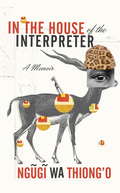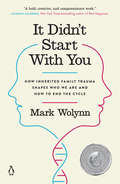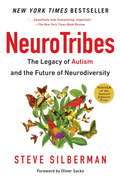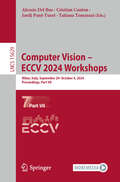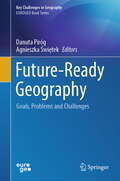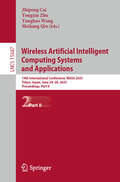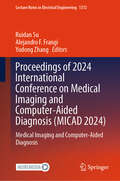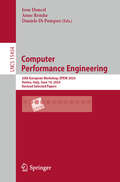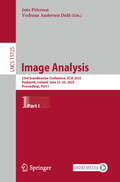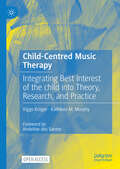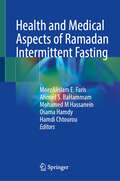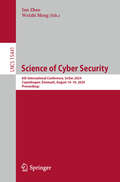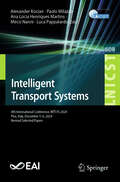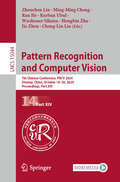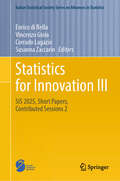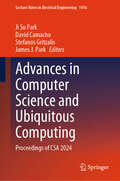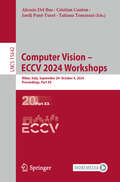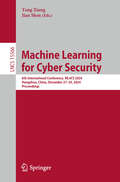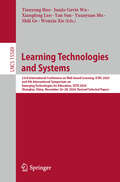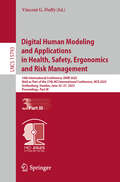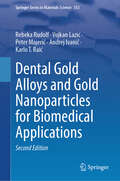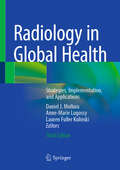- Table View
- List View
The Silver Rose (Charm Bracelet)
by Jane FeatherDear Reader,Like the rose in the haunting tale of "Beauty and the Beast," a silver rose on a charm bracelet brings together a beautiful young woman and a battle-scarred lord....In my story, Ariel Ravenspeare has been taught to loathe the earl of Hawkesmoor and everything he represents. Their two families have been sworn enemies for generations. But it's one thing to hate him, and another to play the part her vicious brothers have written for her--trapping Hawkesmoor into a marriage that will destroy him, using herself as bait. Forced into the marriage, Ariel will find her new husband unexpectedly difficult to manipulate, as well as surprisingly--and powerfully--attractive.But beneath the passion lurk the strands of a long-hidden secret...a secret embodied in a sparkling silver rose.I hope you will be as caught up in Ariel and Hawkesmoor's love story as I was.Warmest wishes,Jane Feather
In the House of the Interpreter: A Memoir
by Ngugi wa Thiong'oNational Book Critics Circle Award Finalist • In the House of the Interpreter hauntingly describes the formative experiences of a young man who would become a world-class writer and, as a political dissident, a moral compass to us all&“Brilliant and essential. . . . A work of understated and heartfelt prose that relates one man&’s intimate view of the epic cultural and political shifts that created modern Africa.&” —Los Angeles TimesRenowned novelist, poet, playwright, and literary critic Ngũgĩ wa Thiong&’o was a student at a prestigious, British-run boarding school near Nairobi when the tumultuous Mau Mau Uprising for independence and Kenyan sovereignty gripped his country. While he enjoyed scouting trips and chess tournaments, his family home was razed to the ground and his brother, a member of the insurgency, was captured by the British and taken to a concentration camp. But Ngũgĩ could not escape history, and eventually found himself jailed after a run in with the forces of colonialism.A winning celebration of the implacable determination of youth and the power of hope, here is a searing account of the history of a man—and the story of a nation.
It Didn't Start with You: How Inherited Family Trauma Shapes Who We Are and How to End the Cycle
by Mark WolynnA groundbreaking approach to transforming traumatic legacies passed down in families over generations, by an acclaimed expert in the field Depression. Anxiety. Chronic Pain. Phobias. Obsessive thoughts. The evidence is compelling: the roots of these difficulties may not reside in our immediate life experience or in chemical imbalances in our brains—but in the lives of our parents, grandparents, and even great-grandparents. The latest scientific research, now making headlines, supports what many have long intuited—that traumatic experience can be passed down through generations. It Didn&’t Start with You builds on the work of leading experts in post-traumatic stress, including Mount Sinai School of Medicine neuroscientist Rachel Yehuda and psychiatrist Bessel van der Kolk, author of The Body Keeps the Score. Even if the person who suffered the original trauma has died, or the story has been forgotten or silenced, memory and feelings can live on. These emotional legacies are often hidden, encoded in everything from gene expression to everyday language, and they play a far greater role in our emotional and physical health than has ever before been understood. As a pioneer in the field of inherited family trauma, Mark Wolynn has worked with individuals and groups on a therapeutic level for over twenty years. It Didn&’t Start with You offers a pragmatic and prescriptive guide to his method, the Core Language Approach. Diagnostic self-inventories provide a way to uncover the fears and anxieties conveyed through everyday words, behaviors, and physical symptoms. Techniques for developing a genogram or extended family tree create a map of experiences going back through the generations. And visualization, active imagination, and direct dialogue create pathways to reconnection, integration, and reclaiming life and health. It Didn&’t Start With You is a transformative approach to resolving longstanding difficulties that in many cases, traditional therapy, drugs, or other interventions have not had the capacity to touch.
NeuroTribes: The Legacy of Autism and the Future of Neurodiversity
by Steve SilbermanThis New York Times–bestselling book upends conventional thinking about autism and suggests a broader model for acceptance, understanding, and full participation in society for people who think differently.&“Beautifully told, humanizing, important.&”—The New York Times Book Review &“Breathtaking.&”—The Boston Globe &“Epic and often shocking.&”—Chicago Tribune WINNER OF THE SAMUEL JOHNSON PRIZE FOR NONFICTION AND THE CALIFORNIA BOOK AWARD What is autism? A lifelong disability, or a naturally occurring form of cognitive difference akin to certain forms of genius? In truth, it is all of these things and more—and the future of our society depends on our understanding it. Wired reporter Steve Silberman unearths the secret history of autism, long suppressed by the same clinicians who became famous for discovering it, and finds surprising answers to the crucial question of why the number of diagnoses has soared in recent years. Going back to the earliest days of autism research, Silberman offers a gripping narrative of Leo Kanner and Hans Asperger, the research pioneers who defined the scope of autism in profoundly different ways; he then goes on to explore the game-changing concept of neurodiversity. NeuroTribes considers the idea that neurological differences such as autism, dyslexia, and ADHD are not errors of nature or products of the toxic modern world, but the result of natural variations in the human genome. This groundbreaking book will reshape our understanding of the history, meaning, function, and implications of neurodiversity in our world.
Computer Vision – ECCV 2024 Workshops: Milan, Italy, September 29–October 4, 2024, Proceedings, Part VII (Lecture Notes in Computer Science #15629)
by Tatiana Tommasi Alessio Del Bue Cristian Canton Jordi Pont-TusetThe multi-volume set LNCS 15623 until LNCS 15646 constitutes the proceedings of the workshops that were held in conjunction with the 18th European Conference on Computer Vision, ECCV 2024, which took place in Milan, Italy, during September 29–October 4, 2024. These LNCS volumes contain 574 accepted papers from 53 of the 73 workshops. The list of workshops and distribution of the workshop papers in the LNCS volumes can be found in the preface that is freely accessible online.
Migrationen der Lyrik um 1300 und um 1800: DFG-Symposion 2023 (Germanistische Symposien)
by Susanne ReichlinGedichte wandern häufig vom einzelnen Blatt oder Brief in unterschiedliche Lyriksammlungen oder Romane, in denen sie aufgrund der veränderten Umgebung neue Bedeutung erlangen. Ähnliches geschieht, wenn die Kanzone aus dem altokzitanischen Sprachraum oder das Sonett von Sizilien aus in andere Regionen und Sprachen migrieren oder wenn Melodien von geistlichen Liedern neue weltliche Texte erhalten. Der Band untersucht solche lyrischen Migrationen in mediengeschichtlicher, praxeologischer und literaturwissenschaftlicher Hinsicht. Er fragt nach den Akteuren und Institutionen, die diese lyrischen Migrationen ermöglichen, und versucht zu ergründen, weshalb bestimmte Texte und Formen migrationsaffiner sind als andere. Dies geschieht aus einer historisch-konstellativen Perspektive anhand der Schwellenzeiten um 1300 und um 1800. Gefragt wird so auch nach Modellen, wie sich die Kontinuitäten und Diskontinuitäten lyrischer Formationen literarhistorisch gewinnbringend fassen lassen.
Future-Ready Geography: Goals, Problems and Challenges (Key Challenges in Geography)
by Danuta Piróg Agnieszka ŚwiętekThis book presents research on how geography as a science, as a university degree and as a school subject can get ready for the “future.” Today's world is in a state of permanent and radical change which is affecting society, science and the economy in equal measure. The concurrent processes of globalisation, digitisation, and integration shape and constantly modify the development factors and generate multidirectional social changes. Growing global issues related to climate change, food security, depletion of conventional energy sources, conflicts and wars, refugee crisis and pandemic open up new issues for geographic investigations as well as reinforce the need to examine old research topics covering a variety of subdisciplines. That is why the term “future-ready” is being more frequently used in discourses on geographic research. In particular, geographic education at schools should be subject to discussion and reflection as this is where our learners are primed to understand the world around them. The chapters of this book spread the knowledge about the role of geography in preparing the society for the future. The book responds to environmental, socio-economic, and political issues of global, regional and local impact. It provides methods, techniques and tools of data collection and analysis which efficiently support geographers in future-oriented research and help in forecasting environmental and social changes. Finally, this volume also discusses how to reinforce the position of geography as science and school subject today and in the future.
Wireless Artificial Intelligent Computing Systems and Applications: 19th International Conference, WASA 2025, Tokyo, Japan, June 24–26, 2025, Proceedings, Part II (Lecture Notes in Computer Science #15687)
by Meikang Qiu Zhipeng Cai Yonghao Wang Yongxin ZhuThe 3-volume set LNCS 15686 - 15688 constitutes the proceedings of the 19th International Conference on Wireless Artificial Intelligent Computing Systems and Applications, WASA 2025, which took place in Tokyo, Japan, during June 24-26, 2025. The 70 full papers and 34 short papers included in the proceedings were carefully reviewed and selected from 282 submissions. The proceedings also contain 10 papers from the AICom2 symposium. WASA is a prestigious annual gathering that serves as a global platform for researchers, academics, and industry professionals to explore and exchange cuttingedge ideas, research findings, and innovative solutions at the dynamic intersection of wireless technologies and artificial intelligence (AI) computing systems.
Britain and Oman, c. 1945–1980: The Silent Relationship (Britain and the World)
by Tancred BradshawThis book examines the relationship between Britain and Oman since the end of the Second World War up until the Iranian revolution. Particular focus is given to the political and economic development of the state, together with Britain’s various overt and covert interventions, principally in the three decades between 1945 and 1975. The author addresses themes which have previously been unexplored in the literature on Oman and British Imperialism in the Arabian Peninsula, such as the establishment of the Sultan’s Armed Forces, and the impact of the oil industry. The book shows that Sultan Said bin Taymur (r. 1932-1970) enjoyed considerable ‘agency’ in his relations with the British who found it very difficult to persuade him to implement economic development and establish relations with his neighbours. Britain’s relations with successive sultans were deliberately concealed, including the contribution of special forces in fighting Oman’s insurgencies. It is widely argued that when Qaboos bin Said became Sultan in 1970, a ‘renaissance’ occurred, however many newly discovered documents have called this into question. They reveal how an inexperienced Sultan came to power with covert British support, and Whitehall’s direction of the war in Dhofar from afar. These documents highlight the extent of British intelligence cooperation and psychological warfare planning to counter the insurgents in Dhofar. However, as this book demonstrates, the Sultan also relied on non-British advisors, known as the ‘mafia’, to secure financial assistance and establish diplomatic ties across the Middle East. Finally, the book details how British defence assistance continued well beyond the retreat from empire in the Persian Gulf.
Proceedings of 2024 International Conference on Medical Imaging and Computer-Aided Diagnosis: Medical Imaging and Computer-Aided Diagnosis (Lecture Notes in Electrical Engineering #1372)
by Alejandro F. Frangi Ruidan Su Yudong ZhangThis book aims to provide a collaborative platform for leading technology minds to exchange insights, foster interdisciplinary dialogue, and propel advancements in both medical imaging and computer-aided diagnosis. As technology evolves, a plethora of state-of-the-art human imaging devices have made remarkable strides in the medical field, transforming diagnostic and treatment standards. Concurrently, there is a growing emphasis on extracting and deciphering extensive information from medical images, spurring the demand for innovative solutions. The fusion of digital image processing and computer vision technologies has paved the way for computer-aided diagnosis (CAD), a pivotal player in disease analysis. This conference extends a warm invitation to researchers, scholars, engineers, scientists, industry leaders, and graduate students active in these fields. Through diverse participation formats, including compelling poster presentations and enlightening oral sessions, attendees will gain profound insights into the intricate interplay between these realms. This book showcases the latest technological breakthroughs, forging valuable connections and envisioning future applications.
Computer Performance Engineering: 20th European Workshop, EPEW 2024, Venice, Italy, June 14, 2024, Revised Selected Papers (Lecture Notes in Computer Science #15454)
by Anne Remke Daniele Di Pompeo Josu DoncelThis book constitutes the refereed proceedings of the 20th European Workshop on Computer Performance Engineering, EPEW 2024, held in Venice, Italy, on June 14, 2024. The 10 papers presented in this volume together with one invited talk were carefully reviewed and selected from 14 submissions. The concept of performance in EPEW 2024 is considered in its broadest sense including the notions of Quality of Service, scalability as well as reliability, availability and systems management, among the others.
Image Analysis: 23rd Scandinavian Conference, SCIA 2025, Reykjavik, Iceland, June 23–25, 2025, Proceedings, Part I (Lecture Notes in Computer Science #15725)
by Jens Petersen Vedrana Andersen DahlThe two-volume set 15725 and 15726 constitutes the refereed proceedings of the 23rd Scandinavian Conference on Image Analysis, SCIA 2025, held in Reykjavik, Iceland, during June 23–25, 2025.The 60 revised full papers presented in these proceedings were carefully reviewed and selected from 98 submissions. The papers are organized in the following topical sections: Part I: Machine learning and deep learning; Segmentation, Grouping, and Shape; Vision for robotics and autonomous vehicles; Biometrics, faces, body gestures and pose; 3D vision from multiview and other sensors; and Vision applications and systems.Part II: Datasets and evaluation; Image and video processing, analysis, and understanding; Detection, recognition, classification, and localization in 2D and/or 3D; Medical, biological, and cell microscopy; Explainable AI for CV; Vision + language (+ other modalities); Computational photography; Fairness; and Low·level and physics·based vision.
Child-Centred Music Therapy: Integrating Best Interest of the child into Theory, Research, and Practice
by Kathleen M. Murphy Viggo KrügerThis open access book draws on recent developments in children&’s rights, particularly concerning the child&’s right to participation, provision and protection. Since 1989, the UNCRC has become a catalogue of rights that expresses legal norms used by all countries in the world. The UNCRC can be considered a toolkit that expresses a normative order, that is, a human rights standard for how to legitimately protect children, and to facilitate processes of participation. For many children and adolescents&’ music is a significant source for gaining health and social/cultural participation. Music then, has the potential for realizing values inherent in the UNCRC. The main aim of this book is to utilize The United Nations Conventions on the Rights (UNCRC) as a tool to give an overview of relevant themes, and to critically explore what implications the convention has for the profession of music therapy, and more specifically, music therapy for children and adolescents.
Health and Medical Aspects of Ramadan Intermittent Fasting
by Osama Hamdy Ahmed S. BaHammam MoezAlIslam E. Faris Mohamed M Hassanein Hamdi ChtourouThe Definitive Guide to Ramadan Fasting & Health - From Leading Experts. Discover the groundbreaking science behind Ramadan intermittent fasting with "Health and Medical Aspects of Ramadan Intermittent Fasting," the first book of its kind. Edited by five renowned scientists with hundreds of published research works in this particular area of research, this comprehensive resource brings together the insights of eminent researchers in the field. Explore 19 in-depth chapters covering the diverse health and medical dimensions of this significant practice. A must-have for healthcare professionals, researchers, and anyone seeking a scientifically sound understanding of Ramadan fasting.
Science of Cyber Security: 6th International Conference, SciSec 2024, Copenhagen, Denmark, August 14–16, 2024, Proceedings (Lecture Notes in Computer Science #15441)
by Jun Zhao Weizhi MengThis book constitutes the refereed proceedings of the 6th International Conference on Science of Cyber Security, SciSec 2024, held in Copenhagen, Denmark, during August 14–16, 2024. The 25 full papers presented here were carefully selected and reviewed from 79 submissions. These papers focus on the recent research, trends and challenges in the emerging field of Cyber Security.
Intelligent Transport Systems: 8th International Conference, INTSYS 2024, Pisa, Italy, December 5–6, 2024, Revised Selected Papers (Lecture Notes of the Institute for Computer Sciences, Social Informatics and Telecommunications Engineering #608)
by Paolo Milazzo Alexander Kocian Mirco Nanni Ana Lúcia Henriques Martins Luca PappalardoThis book constitutes the proceedings of the 8th International Conference on Intelligent Transport Systems, INTSYS 2024, held in Pisa, Italy, duirng December 5-6, 2024. The 25 full papers presented in this book were carefully reviewed and selected from 60 submissions. The papers are organized in the following topical sections: smart technologies; traceability; traffic forecasting and control; road safety; regulations and policies; autonomous vehicles; model-based analysis for cooperative transportation under uncertainty and threats.
Pattern Recognition and Computer Vision: 7th Chinese Conference, PRCV 2024, Urumqi, China, October 18–20, 2024, Proceedings, Part XIV (Lecture Notes in Computer Science #15044)
by Ran He Jie Zhou Cheng-Lin Liu Ming-Ming Cheng Kurban Ubul Hongbin Zha Zhouchen Lin Wushouer SilamuThis 15-volume set LNCS 15031-15045 constitutes the refereed proceedings of the 7th Chinese Conference on Pattern Recognition and Computer Vision, PRCV 2024, held in Urumqi, China, during October 18–20, 2024. The 579 full papers presented were carefully reviewed and selected from 1526 submissions. The papers cover various topics in the broad areas of pattern recognition and computer vision, including machine learning, pattern classification and cluster analysis, neural network and deep learning, low-level vision and image processing, object detection and recognition, 3D vision and reconstruction, action recognition, video analysis and understanding, document analysis and recognition, biometrics, medical image analysis, and various applications.
Statistics for Innovation III: SIS 2025, Short Papers, Contributed Sessions 2 (Italian Statistical Society Series on Advances in Statistics)
by Enrico Di Bella Vincenzo Gioia Corrado Lagazio Susanna ZaccarinThis book presents peer-reviewed short papers on methodological and applied statistical research presented at the Italian Statistical Society&’s international conference on &“Statistics for Innovation&”, SIS 2025, held in Genoa, Italy, June 16-18, 2025. It is the third of four volumes, featuring the second part of the contributions presented in the Contributed Sessions. Providing a comprehensive overview of innovations in modern statistical methods and applications, the volumes address a large number of topics of current interest, contributing to a rapid dissemination of quantitative methods for data analysis across the various fields of scientific research and social life. The volumes underpin the role of statistics and data science in fostering innovation in numerous fields, including business, industry, finance, technology, environment, health and medicine, official statistics, public policy, welfare, social issues and sustainable development. One of the aims of the Italian Statistical Society (SIS) is to promote scientific activities for the development of statistical sciences. Together with the biennial international Scientific Meeting, the intermediate international statistical conferences on a particular topic of interest represent the Society&’s most important events which bring together national and international researchers and professionals to exchange ideas and discuss recent advances and developments in theoretical and applied statistics.
Advances in Computer Science and Ubiquitous Computing: Proceedings of CSA 2024 (Lecture Notes in Electrical Engineering #1416)
by David Camacho James J. Park Stefanos Gritzalis Ji Su ParkThis book presents the combined proceedings of the 16th International Conference on Computer Science and its Applications (CSA 2024) in Pattaya, Thailand, December 18–20, 2024. The aim of this meeting was to promote discussion and interaction among academics, researchers and professionals in the field of ubiquitous computing technologies and computer science and its applications. These proceedings reflect the state of the art in the development of computational methods, involving theory, algorithms, numerical simulation, error and uncertainty analysis and novel applications of new processing techniques in engineering, science and other disciplines related to ubiquitous computing.
Computer Vision – ECCV 2024 Workshops: Milan, Italy, September 29–October 4, 2024, Proceedings, Part XX (Lecture Notes in Computer Science #15642)
by Tatiana Tommasi Alessio Del Bue Cristian Canton Jordi Pont-TusetThe multi-volume set LNCS 15623 until LNCS 15646 constitutes the proceedings of the workshops that were held in conjunction with the 18th European Conference on Computer Vision, ECCV 2024, which took place in Milan, Italy, during September 29–October 4, 2024. These LNCS volumes contain 574 accepted papers from 53 of the 73 workshops. The list of workshops and distribution of the workshop papers in the LNCS volumes can be found in the preface that is freely accessible online.
Machine Learning for Cyber Security: 6th International Conference, ML4CS 2024, Hangzhou, China, December 27–29, 2024, Proceedings (Lecture Notes in Computer Science #15566)
by Yang Xiang Jian ShenThis book constitutes the referred proceedings of the 6th International Conference on Machine Learning for Cyber Security, ML4CS 2024, held in Hangzhou, China, during December 27–29, 2024. The 30 full papers presented in this book were carefully reviewed and selected from 111 submissions. ML4CS is a well-recognized annual international forum for AI-driven security researchers to exchange ideas and present their works. The conference focus on topics such as blockchain, network security, system security, software security, threat intelligence, cybersecurity situational awareness and much many more.
Learning Technologies and Systems: 23rd International Conference on Web-Based Learning, ICWL 2024 and 9th International Symposium on Emerging Technologies for Education, SETE 2024 Shanghai, China, November 26–28, 2024 Revised Selected Papers (Lecture Notes in Computer Science #15589)
by Yan Sun Tianyong Hao Junjie Gavin Wu Xiangfeng Luo Yuanyuan Mu Shili Ge Wenxiu XieThis book constitutes the revised selected papers of the 9th International Symposium on Emerging Technologies for Education, SETE 2024, held in Shanghai, China, during November 26–28, 2024. The 21 full papers presented in this book were carefully reviewed and selected from 45 submissions. The contributions cover the latest findings in various areas, such as Artificial Intelligence in Education, Big Data Driven Education, Informal Learning in the Workplace, Data Driven Decision Making in Education, User/Student/Teacher Modeling, Learning Analytics, Modeling Complex Learning Processes with Multi-Channel Learning Data, Educational Technology and ICT for Education, Assessment in Technology Enhanced Learning, and Inclusive Education. The conjunct events also feature 3 distinguished keynote presentations and 3 workshops, which cover a wide range of topics, such as Generative Artificial Intelligence in Education, Educational Technology and Cognitive Neuroscience for Language Learning, and Digitalization in Language and Cross-Cultural Education.
Digital Human Modeling and Applications in Health, Safety, Ergonomics and Risk Management: 16th International Conference, DHM 2025, Held as Part of the 27th HCI International Conference, HCII 2025, Gothenburg, Sweden, June 22–27, 2025, Proceedings, Part III (Lecture Notes in Computer Science #15793)
by Vincent G. DuffyHealthcare and Rehabilitation Innovation: Personalized Decision Support by Artificial Intelligence for Cardiovascular Diseases: Responsible Innovation.- Multi-agent Assessment Generation System for SBIRT Training in Nursing.- Simulations for Optimizing Patient Transfer between Hospital and Nursing Home.- A Novel Skill Modeling Approach: Integrating Vergnaud&’s Scheme with Cognitive Architectures.- Development and Validation of Female Breastfeeding Aids.- Optimizing the Design and Usability of Digital Weight Loss Patient Decision Aids: Insights from Expert Interviews.- Collaborating with AI Agent: Smart Product-Service System Design for Adolescent Idiopathic Scoliosis Exercise Rehabilitation.- Research on UX of Rehabilitation Training Products for Adolescent Scoliosis.- User Experience in Exergames for Hand Rehabilitation: Explore the Content and Timing of Feedback Mechanisms. Augmented and Virtual Reality for Health, Well-being, and Digital Human Modeling: Application of AR Technology in Children&’s Nature Deficit Disorder Based on Contextual Cognition Theory.- Avatar Appearance Beyond Pixels - User Ratings and Avatar Preferences within Health Applications.- Identifying Usability Challenges in Text-to-Image AI: A Comprehensive Comparison among Mainstream Platforms.- Exploring the Impact of Virtual Avatars in V-Clinic on Male Health Information Disclosure and Information Acquisition.- First Impression Assessment of Digital Human Applicant Images Generated with Posture Prompts and Text Prompts.- MetaHumans: FEER and Social-Emotional Mimicry exercises.- Exploring the Effects of eHMI Position under Different Display Timings on Pedestrian Trust and Crossing Behavior in VR.- Using 3D and 4D Body Scanning to Model Thermal Comfort - Modelling Aspects.- Advancing Fit and Inclusivity: Utilizing BMI and Body Shape to Create 3D Avatars for Men&’s Extended-Size Suits. Behavioral Modeling and Human-Technology Interaction: Influence of Live E-Commerce Content on Users' Purchasing Behavior Based on SOR Theory.- Research on Enhancing Customer Satisfaction in Community Group Buying at M University Based on KANO-IPA.- Designing for Healthy Food Practices: Challenges and Opportunities for Changing People&’s Eating Behavior using Persuasive Technology.- Characterization of Human Behavior during User-Product-Interaction – a Pilot Study.- Exploring the Concept of Goal-Oriented Human-Machine Interface Design in an Agricultural Use Case.- Factors Influencing People&’s Emotional Experiences When Using ChatGPT for Health Information: A Cross-sectional Web-based Questionnaire Survey in the UK.- Design Method of Aging Service Robot Based on AIGC Incorporating TRIZ Theory.- Research on Design Strategies for Co-working Space Furniture from the Perspective of Adaptive Design.
Dental Gold Alloys and Gold Nanoparticles for Biomedical Applications (Springer Series in Materials Science #353)
by Rebeka Rudolf Vojkan Lazić Peter Majerič Andrej Ivanič Karlo T. RaićThis book focuses on recent advances in dental gold alloys and gold nanoparticles (GNPs) for biomedical applications. Dental gold alloys combine several highly desirable mechanical properties, such as high strength, ductility, and elasticity, with extremely robust chemical stability in the mouth, known as high biocompatibility. The new edition presents advanced dental gold alloys for fixed dentures, evaluating the influence of individual elements on the mechanical and other characteristics of the alloys. In the section on the use of GNPs as novel gold biomaterials that provide a multifunctional platform for cellular imaging, biosensing, and targeted drug delivery in tumor immunotherapy and photothermal therapy, their application for incorporation into creams and for rapid LFIA tests is demonstrated. Starting with a comprehensive review of the development and application of dental gold alloys, the book discusses the properties of materials that are crucial for dental applications, focusing on aspects such as microstructure, mechanical properties, chemical and corrosion stability, aging, biocompatibility, and color stability. The book then focuses on the use of GNPs in dental applications, delving into various GNP synthesis techniques to specifically tailor size, shape, and stability in biological media. The new supplement presents the scientific knowledge for the use of GNPs in creams and the studies needed to evaluate their safe use. The fact is that the characterization and safety assessment of nanoparticles and other nanomaterials in cosmetics is very challenging. Cosmetic creams are complex media with multiple components that can affect the physical and chemical properties of nanomaterials, alter their behavior and complicate the transfer of their toxicological aspects to different cosmetic formulations. In addition to these factors, it discusses how their route of exposure, surface chemistry, and how steric effects of their coating affect the biodistribution and determine the level of toxicity of GNPs in the human body. The final section presents the global manufacturers of GNPs and the characteristics of their products. This book contains reviews of the current literature and updated published experimental results and offers an attractive resource for practicing scientists and engineers working in the field of various types of gold-based biomaterials.
Radiology in Global Health: Strategies, Implementation, and Applications
by Daniel J. Mollura Anne-Marie Lugossy Lauren Fuller KulinskiThis third edition provides a definitive, comprehensive, and multidisciplinary reference for a diverse healthcare audience to navigate the complexities of radiology service planning, implementation, and diagnostics in low and middle-income countries (LMICs) and resource-limited medically underserved regions. This book integrates clinical approaches with concepts of project planning to assist radiology professionals, public health specialists, and students to implement medical imaging in under-served and resource-constrained contexts to improve global health outcomes and optimize the use of radiologic technologies. The first section of the book introduces the general role of radiology in international public health, to help readers (i) understand the impact of medical imaging on health disparity (ii) learn how to assess radiologic service infrastructure in low-resource environments, and (iii) learn how to plan projects aiming to address health care shortages. The second section of the book presents clinical contexts for deploying radiology such as pediatrics, trauma, infectious disease, and cancer control. Themes from the two sections are interwoven so that the learner can integrate concepts of project development with clinical objectives. For example, the chapter on information technology (IT) reinforces the chapter on cancer control by addressing IT solutions applicable to cancer management in medically underserved areas. All chapters have been fully updated and this edition adds chapters on artificial intelligence, COVID, and breast imaging, as well as others. This is an ideal guide for radiologists and medical professionals working in LMICs and resource-limited medically underserved regions.

